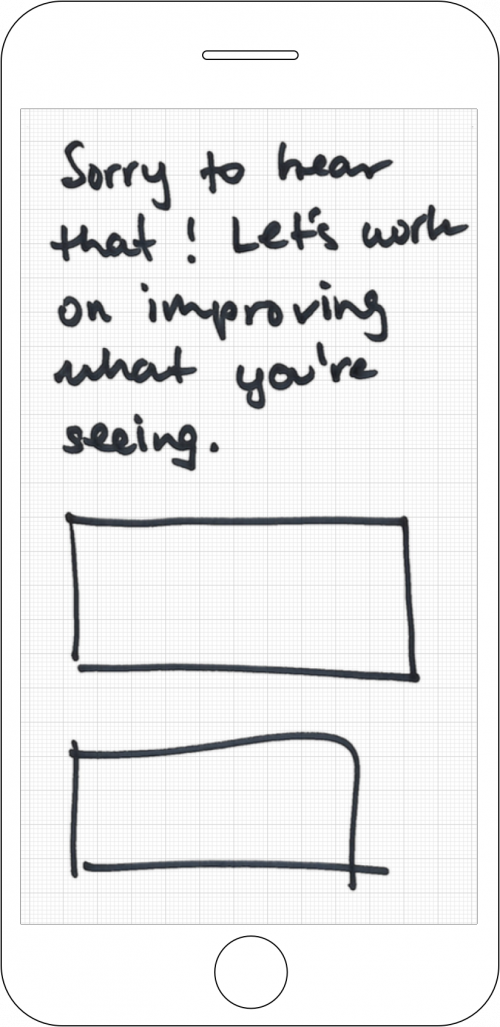How might we...
...facilitate smoother shopping experiences for people by offering them insights into how particular products are recommended in a conversational context?
Chat platform interfaces are simple by design. Even so, we can use the affordances available to us to explain why particular products are recommended to customers, and give them control over these recommendations.
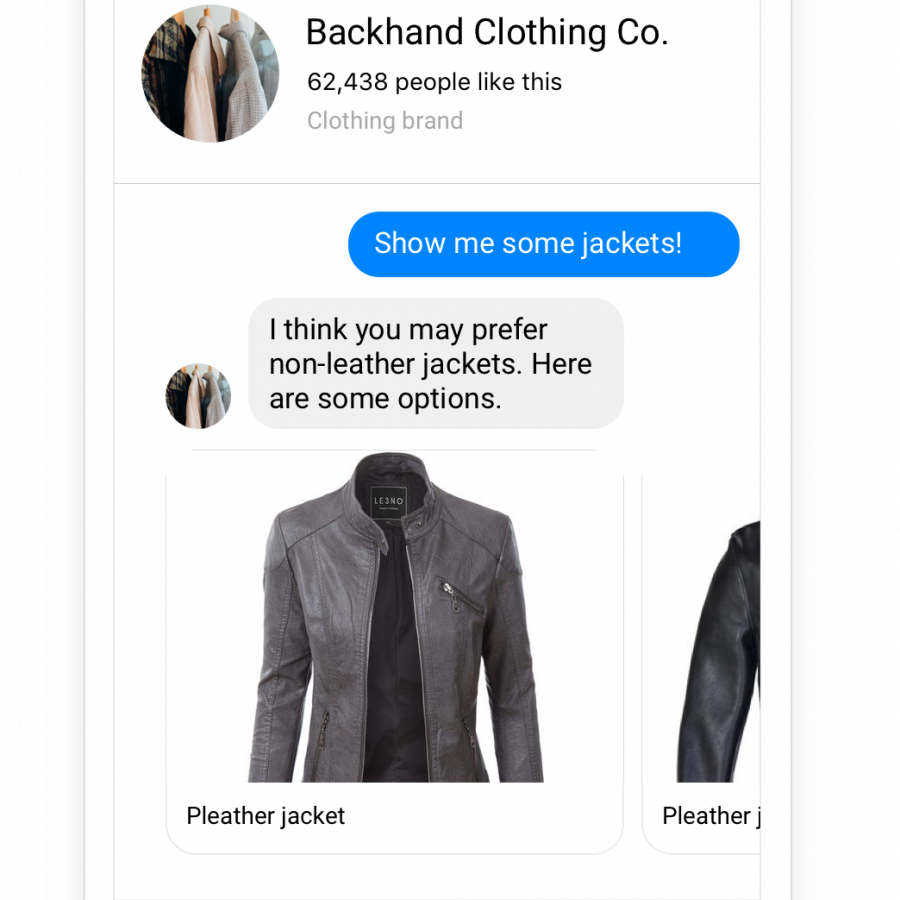
Jumper participated in the TTC Labs Data Innovation Program, which was part of the first season of Startup Station Singapore in partnership with IMDA.
Jumper is a conversational commerce platform, allowing online merchants to sell through the messaging and social channels on which they’re already active.
In order to facilitate these transactions, Jumper collects a customer’s order preference (e.g. size or colour) and delivery address, which are passed on to the merchant selling the item. The payment itself is managed by third-party payment processors.
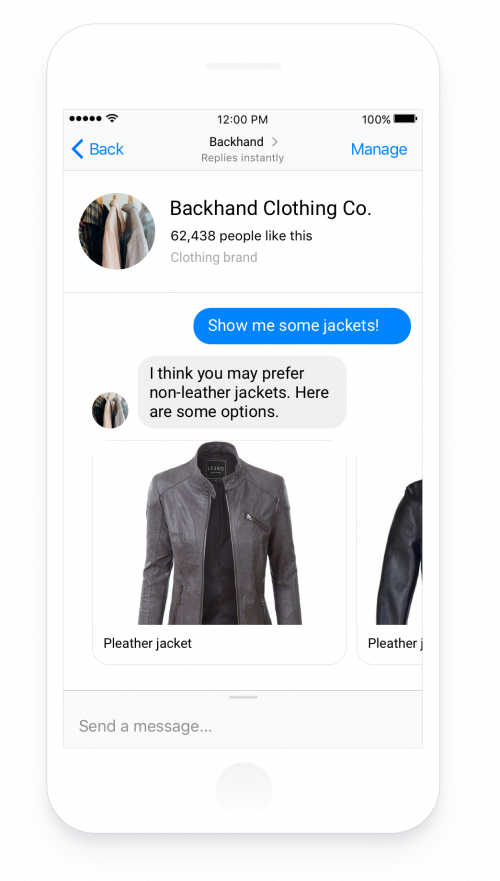
People sometimes get frustrated with personal recommendation systems online, because they suggest products that are either irrelevant, or things that a shopper already has and therefore doesn’t need.
How might we...
...facilitate smoother shopping experiences for people by offering them insights into how particular products are recommended in a conversational context?

Team Jumper develop their concept into a digital prototype
Most people will be familiar with chat interfaces for social messaging or getting support from companies, but shopping through a chat platform will be a new concept for many, and automated recommendations even more so.
To help people to become more comfortable with these types of recommendations, Jumper needs to offer customers a clear interface for reviewing and managing the data that drives them. Jumper can do this by progressively disclosing their use of AI in the recommendation engine: first generally; then by surfacing a small slice of a person’s purchase history; and finally offering a review of that entire purchase history.
This gives customers visibility of how their past actions influence what they’re being shown now, without the need to fully explain an AI-driven recommendation engine to a general public audience.
Importantly, Jumper offers controls for customers to manage how their data influences (or does not influence) these recommendations.
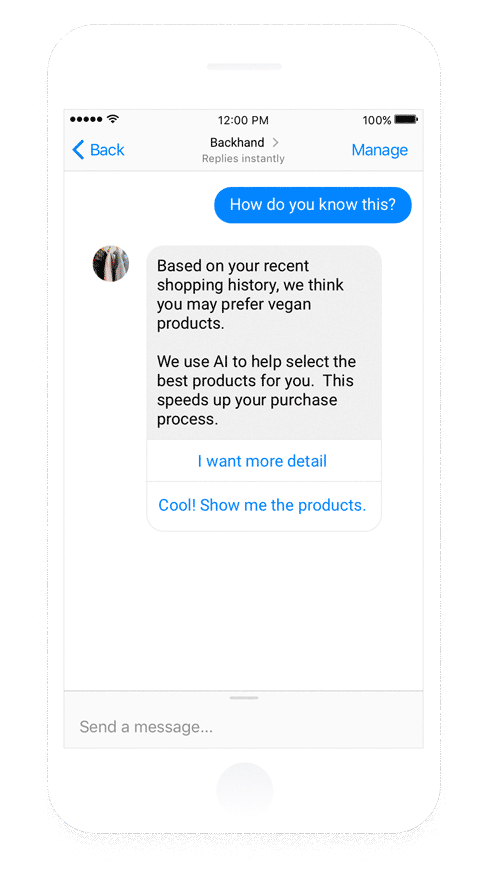
Letting people control how their (inferred) interests are used to drive what might be an otherwise complex and opaque recommendation algorithm is an important part of providing control and transparency in a context like this.
It is important to make it clear to people at this point that they are modifying their preferences on the overall Jumper platform, so it may be necessary to break out of the previous Messenger flow and switch into a more traditional web-based interface here.
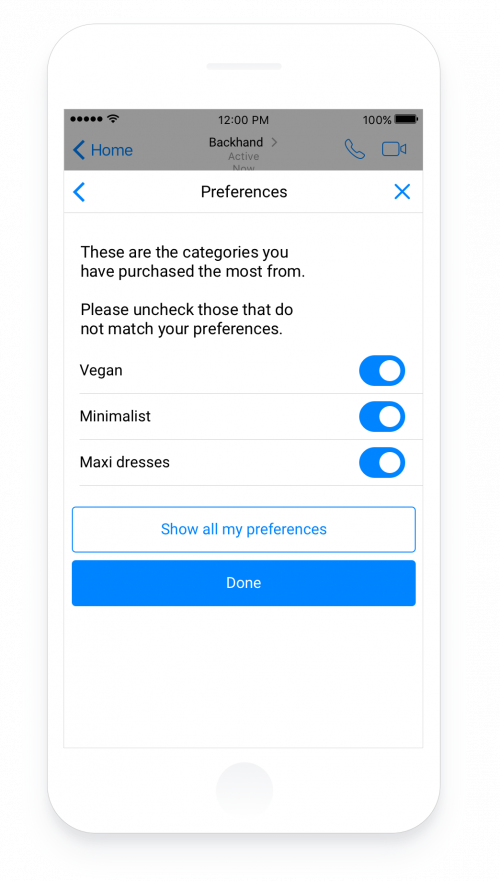
The use of a chatbot allows for progressive disclosure of how the recommendation system works for interested customers, but stays out of the way of those who just want to shop.
While this design pattern remains hypothetical for now, it highlights the importance of considering the constraints and affordances offered to product designers by mobile-first chat platforms.
A considered approach becomes even more crucial here as the less visible technologies that power chatbots on these platforms — like recommendation systems, or user profiles built up over time — become ever more complex, and could overwhelm a casual user if they are not explained clearly, carefully, and succinctly.
How might we build on Jumper’s ideas to build out a model for a transparent chat-driven recommendation system that puts customers in control of what they share with that system, and the types of recommendations they get back?
